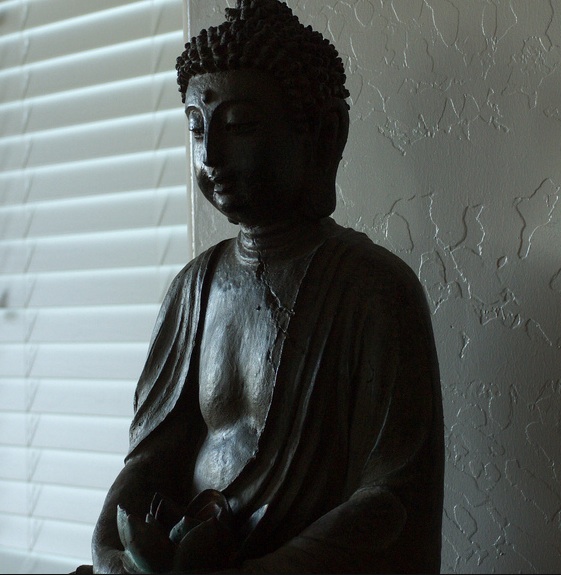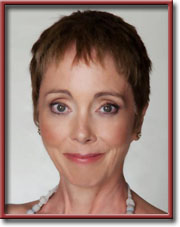Facebook Un-friending & Guru Un-Following
“Ramananda John E. Welshons writes: ‘Among the many amazingly wise, loving, and insightful teachings Meher Baba offered to us was the admonition that ‘to allow yourself to be guided by an impure teacher is like allowing a madman to sit on your chest with a razor blade in his hand.’” Elizabeth Boleman-Herring
Ruminant With A View
By Elizabeth Boleman-Herring

 TEANECK New Jersey—(Weekly Hubris)—11/19/2012—I believe in synchronicity; and I don’t.
TEANECK New Jersey—(Weekly Hubris)—11/19/2012—I believe in synchronicity; and I don’t.
That’s how my mind, and the human mind at large, I suspect, rolls.
Recently, to illustrate my point(s), one of my Facebook friends posted a tiny, plaintive bleat on his wall that ran something like this: “A good friend whom I helped to find a job, and about whom I really care—a good friend of mine, I thought—just unfriended me on Facebook. I’m devastated.”
Knowing this kind soul (let’s call him Sam) as I do, I was surprised by this post. And, at the same time . . . I wasn’t.
Recently, as well (after I had responded to my Facebook friend’s post in several contradictory but, I hope, helpful ways), I received an invitation to attend a seminar with Ramananda John E. Welshons, author of, among other books illuminating his (and your) spiritual path, One Soul, One Love, One Heart: The Sacred Path to Healing All Relationships.
As I had attended another of Welshons’ seminars, when I was in Yoga teacher training (in a nearby city), at which this gentle man had been given one of my handmade Om pendants as a gift, I thought he might, perhaps, remember me.
At least, I reasoned, he’d “remember” the pendant.
So, I wrote to him. About the woman who’d been teaching me, when he and I first met.
And who (let’s call her Samantha) had proceeded to let me down, hard and fast, when my lumbar spine separated, broke neatly in two, on her watch.
Who doesn’t send her advanced student of over a year even a card when her back breaks, and she undergoes spinal fusion surgery? Who doesn’t pick up the phone? Well, who doesn’t even notice that her student’s back is broken in the first place, though she’s supposed to be a Yogini adept? Samantha doesn’t.
I told John E. Welshons that, as much as I’d like to see him again, and sign up for another of his workshops, I could not see my way to attending any further classes sponsored by (and benefiting financially) Samantha. My former teacher was, as New Jerseyans phrase it, dead to me.
She’d been that worst of things: a lousy spiritual guide. A steep step up, or down, from just a bad friend, but in the same dark neck of the woods.
While my Facebook friend, Sam, had run into a bad friend, and I’d run into a bad teacher, we’d both also also run into . . . the phenomenon of “unfriending.”
Sam, undeserving, was unfriended. I, betrayed by a Guru (http://en.wikipedia.org/wiki/Guru), unfollowed her.
To Unfollow.
I believe there should be a stronger new verb for dumping a spiritual guide. “Unfriend” doesn’t quite shoulder the load. Sam had, indeed, suffered a betrayal, a loss; I felt I myself had suffered real and lasting damage. I’d let a feral ferret of a teacher into my Holy of Holies; a madwoman with a razor blade sit on my chest.
In his invitation to “spiritual workshoppers,” Welshons addresses the problem of the bad teacher and, indirectly, the bad friend. He does a lot of this sort of thing in his line of work, which is teaching people about relationships—the relationships among peers; and the one-down/one-up relationships among parents and children; gurus and chelas (students on the spiritual path).
I should add, in the interest of full disclosure, that Ramananda John E. Welshons would not share my feelings for Samantha but, then, he’s never been one-down from her, playing the role of “student” to her “Guru.”
I found Welshons’ “Lesson For The Day”—my day—“spiritually amusing,” coming as it did on the heels of Sam’s Facebook wail. Amusing . . . after two long years of meditating on Samantha’s betrayal; making sense of Samantha’s final lesson.
Welshons writes: “It is quite true that ‘You don’t find the Guru. The Guru finds you.’ But sometimes impatience gets the better of us, and the intensity of our yearning causes us to settle for someone who isn’t really as wise or evolved as they look . . . and yet presents him or herself to us in a way that may cause us to think, ‘Aha! Perhaps the Guru HAS finally found me!’ Among the many amazingly wise, loving, and insightful teachings Meher Baba offered to us was the admonition that ‘To allow yourself to be guided by an impure teacher is like allowing a madman to sit on your chest with a razor blade in his hand.’”
It is true. Samantha had been someone I “settled for,” due to her geographical proximity. I knew from Day 2, if not actually Day 1, that she was the wrong teacher for me. But I was in my late 50s, and her studio was an hour’s drive away. I hoped “the Guru” HAD finally found me.
Oh, But Reader, one should never pick one’s spiritual guides because they’re “in the neighborhood,” or because one’s time in this incarnation is running out. These lessons I’ve now learned very, very well.
Welshons continues: “Over the past 44 years, I have known far too many people who have been hurt and abused by teachers who—initially—looked good on the surface. They may have been charming and radiant . . . even exuding a visible aura of light. They may possess siddhis (spiritual powers) previously unimaginable to their students—and those siddhis make them capable of moving and awakening their students’ spiritual energies in a delightfully compelling way. They might also be capable of transmitting amazing and alluring forms of spiritual ‘experience,’ like shaktipat or kundalini energy. Unfortunately, those very same teachers may also turn out—in the long run—to be unenlightened, unwise, uncompassionate, and—ultimately—self-serving.”
As I read Welshons’ words, I thought back two years to my time in Samantha’s classroom (read: money-making Yoga-mill), and all the hard labor my husband and I had put in trying to organize certain aspects of the place, shed some light around us as I worked towards my Yoga teaching certificate (a certificate which would cost me thousands of dollars to “earn” but which, I found out, was useless, as Samantha’s course is no longer Iyengar-accredited, though she still features our mutual Guru’s signature emblem on her wall).
Welshons hits my nail on its head when he writes: “Many of their unsuspecting chelas (students) wind up with their tender human hearts so terribly hurt, and their trust in the Universe so totally violated, that—in many cases—it can take years to shed the toxic effects of aligning oneself with such an impure spiritual teacher. Disillusioned students often walk away from the spiritual path entirely—at least for a time—dismayed, depressed, and deeply disappointed that the being in whom they sought to find God . . . or, at least, to come closer to God . . . in whom they placed so much trust . . . has completely undermined their faith.”
Boy, did that ever apply—to Sam, Samantha, Sam’s opportunistic former Facebook friend, and me.
Welshons writes: “While, of course, ‘it is all perfect,’ [on some subtle level, I would add here] part of the perfection manifesting in this moment motivates me to speak out, in the same way I would speak out when someone I know and love is traveling down a dark road that I know well, but is unfamiliar to them, and I feel compelled to say, ‘Watch out, there is a very difficult curve at the edge of a very precipitous cliff about three miles down that road, a very damaging pothole a little beyond that, and a very slippery spot just before a steep drop . . . . ” I might advise taking a different road, or —if that advice isn’t warmly received—then a suggestion to proceed very cautiously. I can offer a warning. Whether or not one heeds it is all a matter of karma.
“I will say this: while we are accustomed to being disappointed by family, friends, celebrities, sports heroes, and politicians . . . the disappointment that comes on the heels of an encounter with an impure spiritual teacher can be quite devastating—and is a life-lesson one might do well to avoid, if one’s karmic predispositions permit . . . .”
Amen, Brother Welshons. Amen!
For, on my own spiritual path which, for some 15 years now, has involved a great deal of Yoga in the style and spirit of B.K.S. Iyengar, I have encountered, learned from, and survived three very imperfect “Iyengar teachers,” all certified to teach the Iyengar method, but all patently deeply flawed human beings who have damaged me, and others, in the course of their clumsy, egocentric and, finally, financially, emotionally and spiritually expensive bungling.
Would that I’d received Ramananda Welshons’ email about three years ago, before Samantha led me down the primrose path, pilfering my pocket and breaking my heart.
However, his words came just in time for Sam, and it is for him, in fact, that I write this column.
“Since so many have asked me recently how to recognize a true teacher,” writes Welshons, “I sat down and reflected on what I have learned over the past 44 years. The following emerged out of those reflections:
“A True Guru [and, I would add, Sam, a true friend]: teaches only Love, and asks for nothing in return; liberates you from suffering, rather than liberating you from your money; touches your Heart rather than touching your body; shows you how to find the wisdom in your own Being rather than trying to impress you with how much unique knowledge and power they possess; reminds you that happiness comes not from getting what you want, but from getting free of wanting; focuses more on compassion than on chakras; more on kindness than on kundalini, more on selflessness than on samadhi, more on Truth, trust, and tenderness than on tantra; teaches you—by example—how to love, serve, be kind, and be generous; helps you realize the long-term effects of words, deeds, and actions; helps you let go of your attachment to separateness—your body, your mind, and your personality—rather than magnifying the importance of these identities.”
He concludes: “You will know true Gurus if: all they want from you is that you go to God [and, because I no longer use the word ‘God,’ I would say, instead, The Ineffable]; they teach you to Love rather than teaching you to fear; they focus on the Light of the Creator [or, The Ineffable] rather than the darkness of the world; they lead by example and walk their talk; they inspire a deep love and peace in you rather than a fascination with the energies they can arouse and manipulate.”
Welshons’ email to me, and to his many other former students, concludes: “A true teacher teaches only Love . . . and asks for nothing in return. May you be blessed to find the One True Guru . . . the One who resides eternally in your own Heart . . . .”
One would think that, for Sam and me—both students on the spiritual path—it would become easier to tell black from white, dark from light, charlatan from Guru, but I have found this not to be the case.
If Sam and I could not be tricked and deceived, perhaps we would be harder, more brittle creatures, always on our guard, and miss the tiny openings to The Light, entirely.
The secret is, of course, to absorb the lesson—not its bitterness—and go on, not making the same mistake over and over, but becoming more discerning, wiser, as we move forward.
I suspect Sam has been disappointed by friends before; been “unfriended,” in life, if not in social media.
I know I myself have had, and survived, three abysmal Yoga “teachers.”
But I do, still, believe the Universe is trying to teach me, and Sam, too—even if it’s the moral equivalent of herding cats. Trying to help us choose better for ourselves.
Three mad-people on my chest with razor blades in their hands will do me, thank you. There will not be a fourth.
But it took three mad-people to get me to see that The True Guru resides in my own light-and-dark heart. I need look—and Sam needs look—no farther afield.
And, I believe, I’ve “paid” for and attended my last “spiritual workshop” during this particular incarnation, apologies to such good teachers as Ramananda John E. Welshons. From now on, it’s “homework” for me.
![]()
Note: Here are further links to Ramananda John E. Welshons and his work: Open Heart Seminars, PO Box 110, Little Falls, New Jersey 07424; www.onesoulonelove.com; http://www.youtube.com/watch?v=wGCa1ak-vf8.
Photo by: Alejandro Rojas (http://www.flickr.com/photos/alebuddha/)


2 Comments
jocelyn
Wow, e…I sure wish I was there to give you a big hug after reading this piece about betrayal by one’s heroes. Are there any of us who can’t relate to this one? I don’t believe so. Such a painful lesson. And such a sad truth to discover — too many times. But the end game of looking inside is brilliant, and better late than never. Meantime, may this Thanksgiving be a greateful and delicious day for you and Dean. With much love always, even during the long silences, Jocelyn
eboleman-herring
Hi, Jocelyn! The downside of trusting is betrayal; the upside of betrayal . . . is trusting . . . oneself, that is. The photo caption above, a Buddhist koan, is a well known one: “If you meet the Buddha on the road, kill him.” And, in the final analysis, to become masters, to become teachers, to become the adults in our own rooms, we have to strike out on our own and, finally, leave our early “gurus” behind (symbolically murdered on the road). It isn’t a painless process. xoxoxoxo e